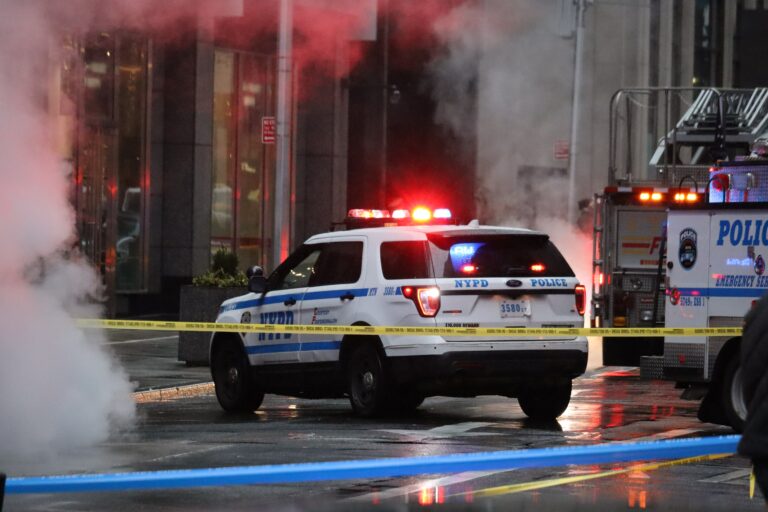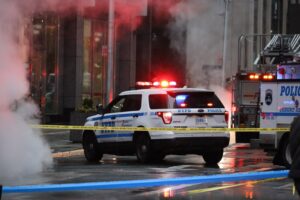By now, everyone is aware that the United States has been going through a crime surge that has dramatically increased homicide in our country. The overall murder rate is at a multi-decade high of 6.9 per 100,000, with around 22,735 murders in 2021. Gun-control advocates have already taken to blaming guns for this increase.
But while nearly every part of the country has seen an uptick in violent crime, what has not changed is that murder in the United States is still not spread out equally. For people who live in most parts of the country that are not dealing with a major violent crime problem, this creates a disconnect between what we hear on the news about the ever more dangerous state of the country and what we actually experience in our day-to-day lives. In that context, calls for more gun control sound not just unwise but like a solution in search of a problem, as gun violence is simply not a statistically significant threat to most of the country.
Growing up in San Diego, I always thought it was bizarre how Europeans (and many gun-control advocates) talked about the United States as if it were some crime-riddled wasteland. I felt every bit as safe in my hometown as I did visiting family in various cities in Greece. I would only learn much later that that was because San Diego has a very low homicide rate for an American city, with about 4.1 homicides per 100,000 people in 2021. In fact, San Diego has the lowest homicide rate of any of the big-three California cities by far. This despite it also being the friendliest to gun rights of the three (relative to California anyway). San Francisco chased out its last gun store in 2015, yet has a homicide rate about 60 percent higher than that of San Diego. Los Angeles is more than double San Diego’s rate, with 10.1 murders per 100,000 people.
This divergence in results just between big cities in my home state made me interested in the overall concentration of homicide in the United States. Here is the list of 20 large cities in the United States which claimed the dubious distinction of having the highest homicides rates in 2021:
- St. Louis, MO – 199 homicides, 293,310 people – 67.8 homicides per 100,000 people.
- New Orleans, LA – 218 homicides, 390,845 people – 55.8 homicides per 100,000 people.
- Baltimore, MD – 337 homicides, 609,032 people – 55.3 homicides per 100,000 people.
- Memphis, TN – 346 homicides, 651,932 people – 53.1 homicides per 100,000 people.
- Detroit, MI – 309 homicides, 674,841 people – 45.8 homicides per 100,000 people.
- Cleveland, OH – 170 homicides, 385,282 people – 44.1 homicides per 100,000 people.
- Pittsburgh, PA – 123 homicides, 302,205 people – 40.7 homicides per 100,000 people.
- Philadelphia, PA – 562 homicides, 1,603,797 people – 35 homicides per 100,000 people.
- Milwaukee, WI – 197 homicides, 594,548 people – 33.1 homicides per 100,000 people.
- Washington D.C. – 227 homicides, 692,683 people – 32.8 homicides per 100,000 people.
- Atlanta, GA – 158 homicides, 488,800 people – 32.3 homicides per 100,000 people.
- Kansas City, MO – 157 homicides, 486,404 people – 32.3 homicides per 100,000 people.
- Oakland, CA – 134 homicides, 425,097 people – 31.5 homicides per 100,000 people.
- Indianapolis, IN – 271 homicides, 864,447 people – 31.3 homicides per 100,000 people.
- Cincinnati, OH – 94 homicides, 301,394 people – 31.2 homicides per 100,000 people.
- Louisville, KY – 188 homicides, 617,790 people – 30.4 homicides per 100,000 people.
- Chicago, IL – 797 homicides, 2,710,000 people – 29.4 homicides per 100,000 people.
- Las Vegas, NV – 147 homicides, 634,773 people – 23.2 homicides per 100,000 people.
- Newark, NJ – 57 homicides, 281,054 people – 20.3 homicides per 100,000 people.
- Tulsa, OK – 62 homicides, 402,324 people – 15.4 homicides per 100,000 people.
The figures in any of these cities are horrifying on their own, but they become especially tragic when compared against much safer parts of the country. Recall that San Diego’s homicide rate was about 4 per 100,000 people in 2021. That means if you live in St. Louis, your chance of being murdered is roughly 17 times higher than someone who lives in San Diego. One city has a practically European homicide rate, while the other is akin to a third-world country.
These 20 cities add up to a total population of 13,410,558 people, meaning they make up roughly 4.1% of the US population of 329,500,000 people. If the nation’s estimated 22,735 homicides in 2021 were distributed evenly, then these 20 cities would be responsible for about 932 homicides. Instead, they accounted for a stunning total of 4,753. In other words, the 20 cities above represent around 4% of our population but are responsible for 21% of our homicides. And I am confident that if I had kept going on down the list to the next 20 cities, the same trend would continue.
The trend is even apparent within individual states. Missouri, for example, has about 6,140,000 people, and a statewide homicide rate of 11.8 per 100,000 people in 2020 (2021 data for the state is not yet available). This translates to around 725 homicides per year statewide. In 2021, St. Louis and Kansas City alone accounted for 356 homicides, about 49% of the state’s 2020 total, even though they only have around 12.5% of the state’s population. If you are a Missourian who lives in St. Louis or Kansas City, you have to contend with an astronomically high homicide rate – 67.8 per 100,000 in St. Louis and 32.3 per 100,000 in Kansas City. Everyone else in the state, over 87% of its population, has a homicide rate of 6.9 per 100,000 people.
Gun-control advocates blame the availability of guns for the violence plaguing so many cities, with Rep. Eric Swalwell recently going so far as to accuse Republicans of being “the party of mass shooters.” But many of the cities above are hardly what many would call gun-friendly, with various restrictive state or local laws. Even those of the 20 cities in traditionally red states usually have a Democrat-dominated local government. For example, the last Republican mayor of St. Louis left office in 1949. New Orleans hasn’t had a Republican mayor since 1872, and Atlanta not since 1879. Currently, 18 of the cities have Democrat mayors, one Republican (Tulsa, OK), and one independent (Las Vegas, NV.) To the extent Democrats running these cities have pushed local gun-control measures, they apparently have not had enough of an effect to bring down the horrific homicide problem they face.
This assessment isn’t entirely fair of course, because most urban voters overall favor Democrats, including some in cities with low homicide rates like New York City, my hometown of San Diego, and others. Yet a closer examination shows us the flaw in such anecdotes. New York City, liberal as it may be, is not afraid to elect Republicans or Independents at times, including Rudy Giuliani in the 1990s, and Michael Bloomberg more recently. San Diego, meanwhile, may have a Democrat mayor currently, but two-term Republican Mayor Kevin Faulconer just left office in 2020. And Miami under Republican Mayor Francis Suarez was one of the only big cities in the country to see its homicide rate decline significantly in 2021, seeing a 15% reduction.
Perhaps there is something to be said for having diverse political leadership over the years, but I’ll leave it to someone more qualified to definitively determine what particular cities do right and wrong in combating crime. Regardless, what is clear to me is that the reason for the difference in perceptions on crime is due to the drastically different lived experiences of Americans. Someone in gun-friendly Boise, Idaho with its homicide rate of 1.7 per 100,000 people in 2020, simply does not understand the danger people in Baltimore or St. Louis face.
Gun control is a misguided solution in my estimation, one that condemns those who have to live in dangerous cities with a reduced ability to defend themselves even though they need their gun rights more than any of us. But it is hardly surprising to me that people will be willing to try anything they think could make their cities safer. I can certainly empathize and understand their motivation, even if I vehemently disagree with the proposed solution. Advocates of expanded gun rights must work to propose and push for solutions that reduce crime while also defending our Second Amendment rights.
The generational violence plaguing some of our most blighted cities has gone on for far too long.







4 Responses
You might find it interesting (and shocking) to look at areas within these cities. No statistic is uniformly spread out over any political subdivision…
Definitely something I want to do when I have more time. I fully expect the national picture to be repeated on a micro level, with just some parts of the cities having most of the homicides.
Thanks so much for this! I’ll be giving your piece special attention in the Law-and-Order block of my News Rodeo today.
One errata: your first city listed is St. Louis, but the article lists it as “Louis, MO” without the “St.” Quick correction and you’re golden.
Thanks for the heads up! I’ve fixed the issue.